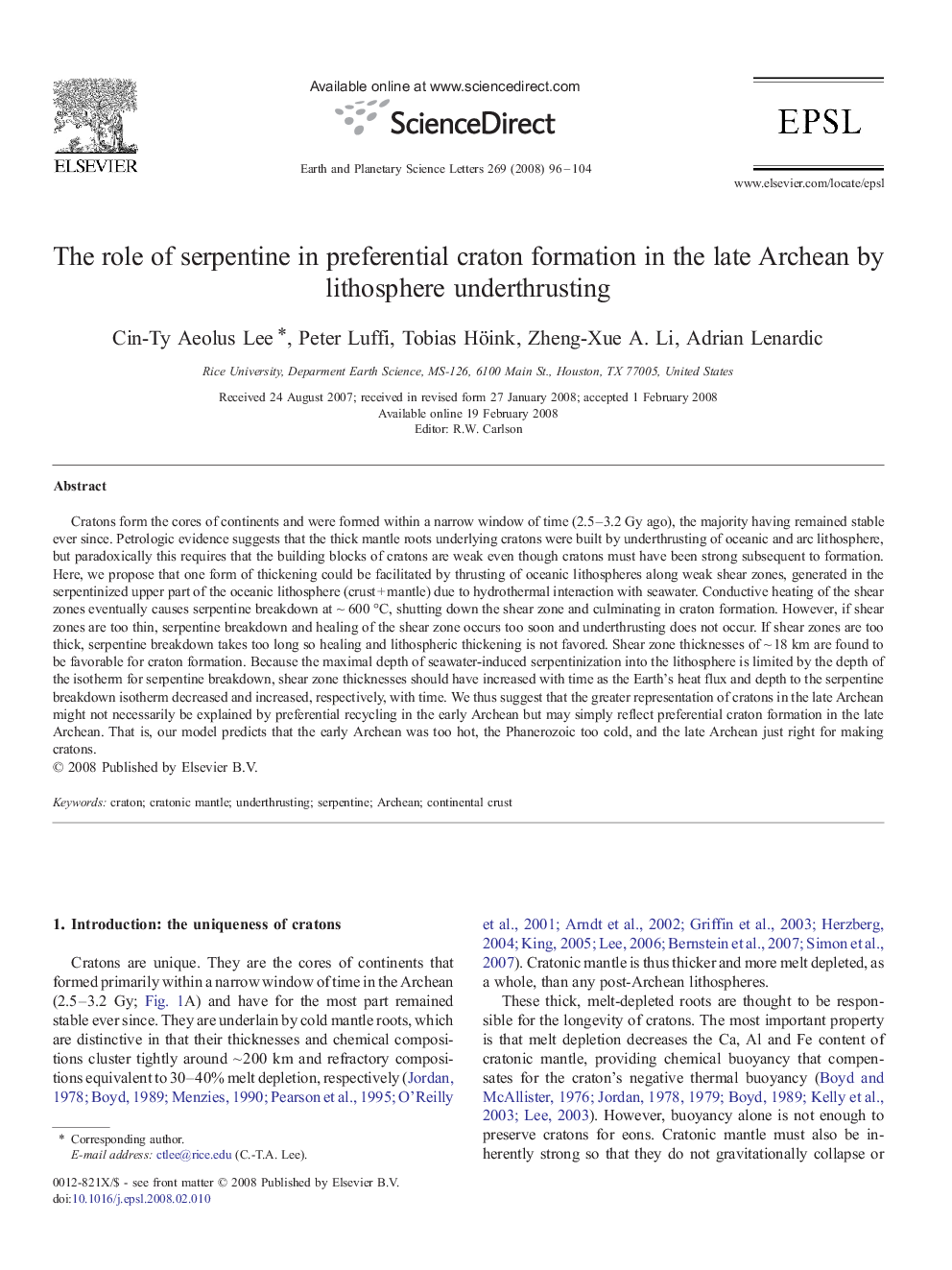| Article ID | Journal | Published Year | Pages | File Type |
|---|---|---|---|---|
| 4679924 | Earth and Planetary Science Letters | 2008 | 9 Pages |
Cratons form the cores of continents and were formed within a narrow window of time (2.5–3.2 Gy ago), the majority having remained stable ever since. Petrologic evidence suggests that the thick mantle roots underlying cratons were built by underthrusting of oceanic and arc lithosphere, but paradoxically this requires that the building blocks of cratons are weak even though cratons must have been strong subsequent to formation. Here, we propose that one form of thickening could be facilitated by thrusting of oceanic lithospheres along weak shear zones, generated in the serpentinized upper part of the oceanic lithosphere (crust + mantle) due to hydrothermal interaction with seawater. Conductive heating of the shear zones eventually causes serpentine breakdown at ~ 600 °C, shutting down the shear zone and culminating in craton formation. However, if shear zones are too thin, serpentine breakdown and healing of the shear zone occurs too soon and underthrusting does not occur. If shear zones are too thick, serpentine breakdown takes too long so healing and lithospheric thickening is not favored. Shear zone thicknesses of ~ 18 km are found to be favorable for craton formation. Because the maximal depth of seawater-induced serpentinization into the lithosphere is limited by the depth of the isotherm for serpentine breakdown, shear zone thicknesses should have increased with time as the Earth's heat flux and depth to the serpentine breakdown isotherm decreased and increased, respectively, with time. We thus suggest that the greater representation of cratons in the late Archean might not necessarily be explained by preferential recycling in the early Archean but may simply reflect preferential craton formation in the late Archean. That is, our model predicts that the early Archean was too hot, the Phanerozoic too cold, and the late Archean just right for making cratons.
